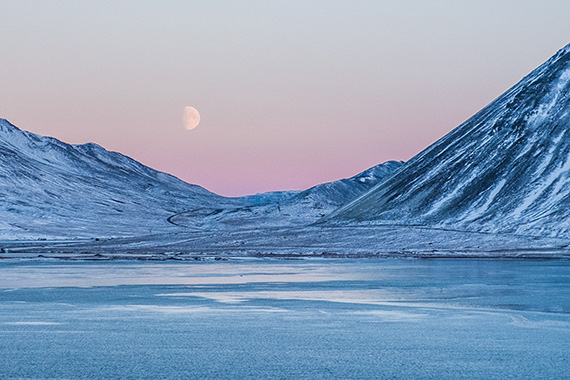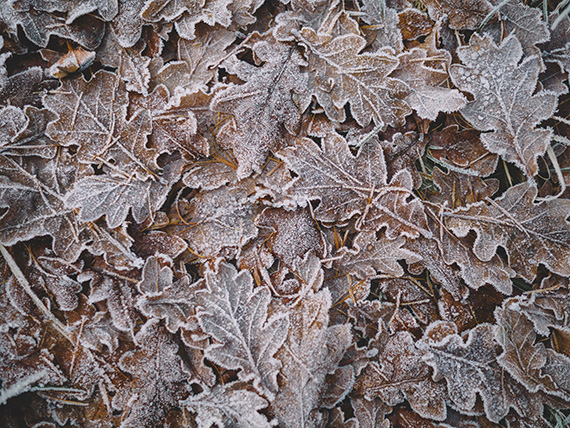When it comes to taking a great winter photograph, keep these helpful tips in mind.
1. Planning
All too often the amateur photographer wakes up on a chill winter morning and decides to brave the elements and take some winter landscape photos. The first mistake is the spontaneity.

Photo by Daiwei Lu
Preparation is key to a good winter scene. All equipment and personal needs should be ready the night before. Pack all equipment by the door, set out warm clothes, and use the timer on your coffee pot. Be sure to know your destination before-hand and ensure that you have dressed for the occasion. The great shot will be hard to come by if you spend your time shivering and thinking about being cold.
2. Timing
Winter photographs are best early. The fresh snow will not be disturbed and the lighting is better. A calm setting provides better concentration and a better chance for that fresh blanket of snow. There is also a better chance for wildlife in early morning. The key is to minimize disturbance from the hustle and bustle of everyone else. Overexposure is the biggest problem in photographing a winter wonderland. Put your camera in aperture priority mode and check your pictures occasionally for the winter whiteout. The morning sun will not be directly overhead to blind you and your photos.
3. Setting Up
The background in winter photos is all too obvious. Take a good look around before shooting; the leaves are not there to block power lines, buildings, and towers. Most winter photos will have a serene look; keep it that way.
The contrast in winter photos can be spectacular. A picture of a snowy field will not look as beautiful from the camera lens as it does when shooting it. Find enough contrast (trees, rivers, buildings, rocks) in your shot to solidify the picture.
When taking wedding photos, make sure you have a background that allows the wedding gown stand out. Have a warm safe haven nearby to keep the wedding party warm. Smiles don’t look as bright when everyone’s teeth are chattering.
4. Equipment Care
The temperature is usually of no concern. Most cameras built today are designed to work in a variety of temperatures. Be sure to handle your equipment with great care. Moisture from the snow can ruin an outing. Be sure to take extra care when changing lenses, batteries, etc. Have a soft cloth handy to help reduce fog on the lens.

Photo by Andrew Ridley
Winter landscapes can be extraordinary if you are prepared, careful, time it right, and set up for success. Follow these guidelines to ensure that your next outing is one with beautiful results.
About the Author:
Colin McDonald writes of behalf of Steven Brooks, who is a wedding photographer in London.
Like This Article?
Don't Miss The Next One!
Join over 100,000 photographers of all experience levels who receive our free photography tips and articles to stay current:






I think making concept of what we gonna take in picture is to be added in planning and timing. Anyway great article it’s very greatful. Thank you so much for sharing such a great article.
I guess my 5 year old Canon XTi might not make the grade concerning “designed to work in a variety of temperatures”, as it froze on this day (around -10 Centigrade, with a wind chilll)! Was in the shop for a week replacing a sensor that caught some moisture.
http://www.flickr.com/photos/jamesgonneau/5365581871/
My tips: watch for condensation when return to warmth. A plastic bag around the camera helps. As well, batteries and cards will take a beating as well. Keep them warm as possible, as long as possible. Some more intrepid folks keep them in their arm pits.
mmm…very very very interesting ….i’ll note this “instruction” for my next mountain trip !! thank you !!
I would think that under exposure would be more of a problem then overexposure. The meter seeing all the whire snow would evaluate the scene as very brght and try to bring the snow down to a shade of gray resulting in a dark underexposed picture.
I was told to always use positive compensation when shooting scenes with a lot of white like snow.
Interesting video and good advice. Too bad that the person taking the video didn’t follow your advice. There were 2 soft spots in the middle of the frame – probably some remains of snow flakes, and in another instant there were water droplets on the lens.
I would use a lens hood for added protection.